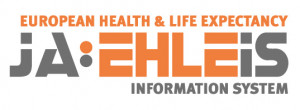EHLEIS project (2007-2010/2011-2014)
The European Life and Health Expectancy Information System

The EHLEIS project (2007-2010/2011-2014) prolonged the EHEMU project and moved to a European Joint Action in 2011 with 10 specific objectives (SO) grouped under four main themes:
• Maintaining the EU Health and Life Expectancy database and website: to further develop the database (SO1) and website (SO2) begun by EHEMU as a central reference point for MS, researchers and the general public providing readily accessible, reliably calculated, up-to-date estimates of HE through a variety of means including interactive maps, graphs and country reports;
• Monitoring and analysis of health expectancies in the EU and the 27 MS from SILC and EHIS:
- to provide basic information for HLY and its trends in relation to the Eurostat-SANCO Task Force on Health Expectancies (SO3);
- provide more in-depth analyses on (1) trends (SO4) and (ii) gender gaps (SO5) in HE from measures of self-rated health, morbidity, functioning and disability, the similarity or difference between groups of MS and how these are correlated with macro level factors (such as wealth);
• Development of new datasets, measures and tools for analysis of health expectancies: to explore (i) HE from a wider range of measures of physical and mental function and limitation in self and household care and the trade-off between such measures using SHARE and (ii) the potential of recent surveys with mortality follow-up, such as EPIC-Elderly to estimate HE within social groups, in a more restricted range of MS (SO6);
- to better understand differences in HE over time (SO4) and between men and women (SO5) and between MS through decomposition techniques (SO7);
- to further engage with current harmonization initiatives worldwide aiming to clarify cultural differences in health measures through shared concepts and optimal translation (SO8);
• Education:
- to provide a training workshop on HE, particularly aimed at new MS, to ensure best practice and optimal comprehension and utility of such indicators and the underlying harmonised data and techniques (SO9);
- to host a European conference for policy-makers, politicians, public health officials and researchers to enable an exchange of information on the utility of HE indicators and how they are incorporated in government strategies within their countries (SO10).
The overall strategy of EHLEIS is to disseminate high quality information on HE through a wide range of means including a dedicated website, ad-hoc technical reports, regular country reports, a training workshop, the European conference and its proceedings and scientific papers. This will be implemented by an established and well-respected group of experts in HE with a strong network of public health collaborators covering the 27 MS.
Details about the European projects can be found on the EuroHex website.
